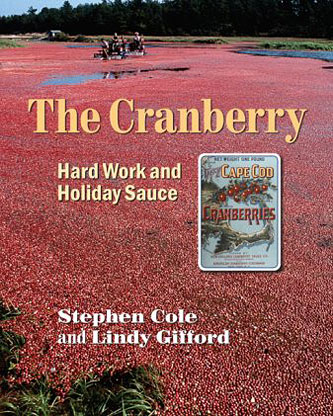THE CRANBERRY, by Stephen Cole and Lindy Gifford, explores how a wild fruit became a cultivated commodity; the American cranberry contains equal amounts of holiday symbolism and antioxidants. Its evol
THE CRANBERRY, by Stephen Cole and Lindy Gifford, explores how a wild fruit became a cultivated commodity; the American cranberry contains equal amounts of holiday symbolism and antioxidants. Its evolution over the past century is a surprising story of risk, enterprise, conflict, and the tension between tradition and innovation. The cranberry is characterized by the distinctive regions-from Cape Cod to the Pacific Northwest-where it is grown. But the diminutive fruit has also changed the life and landscape of these places. THE CRANBERRY harvests stories, images, and observations to tell the unusual tale of an American subculture dominated by this tart little red fruit.
Stephen A. Cole directs the natural resources and sustainable communities programs at Coastal Enterprises, Inc., a community—development corporation. He is co—author of I Was Content and Not Content: The Story of Linda Lord and the Closing of Penobscot Poultry and author of The Rangeley and Its Region: The Famous Boat and Lakes of Western Maine. He lives in Damariscotta, Maine, with his family. Lindy Gifford is an independent graphic designer and photographer. She did the book design for The Cranberry, as well as much of the photography and historical research. She has designed other book covers and interiors for Tilbury House, Down East Books, WoodenBoat, and other publishers. She also lives in Damariscotta with her family (which includes Steve Cole). Cole and Gifford lived for years in Marion and Wareham, Massachusetts, before moving to Maine.
View Biographical note
"The harvesting of the 'turkey's tablemate', as author Stephen Cole calls the cranberry, is almost entirely mechanized now. However, not so very long ago harvesting was done entirely by hand. . . . The many photos and personal interviews conducted in the book bring an intimate framework to the story of the cranberry, illustrating both the industrial challenge and America's growing demand for fruit juices. The authors have gathered an in—depth historical record, which is fascinating to read. Rich details emerge. Though 'not the stuff of thrillers', Cole write wryly, 'it is always interesting to watch what transpires when man tries to alter a denizen of the natural world'." —Working Waterfron
View Review text
